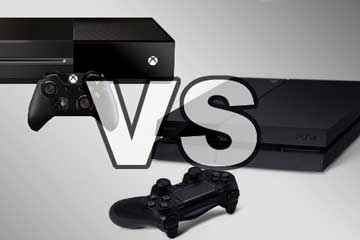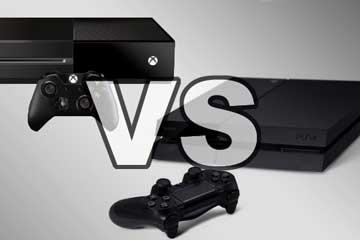I used to be a hardcore gamer and worked in gaming, now I occasionally play a game but not nearly as intensively as before. But secretly, I’m still fascinated by developments in gaming and closely follow the news. The last time a ‘console war’ broke out was 8 years ago, leading to Nintendo’s Wii capturing casual gamers while Microsoft’s Xbox 360 and Sony’s PlayStation 3 fought over the more hardcore audience. This battle continues: Nintendo’s Wii U plays its own game while Microsoft’s Xbox One and Sony’s PlayStation 4 are tussling with each other. We look at the positioning of the 3 brands because the saying teaches us: when two dogs fight over a bone, often the third runs away with it.
Positioning of new consoles by Sony and Microsoft too greedy?

A situation sketch: Nintendo with its Wii sold 100 million units in recent years. They are thus market leaders since Sony or Microsoft did not manage to sell more than 78 million consoles. How can the Wii’s success be explained? Making choices: they did not opt for the fastest processor, not for Blu-Ray, or the best or most realistic graphics. They chose a target audience. The audience that just wants to play fun games, together and from young to old. A clear positioning that has paid off well for Nintendo.
Positioning of new consoles Sony & Microsoft
What have Sony and Microsoft learned from this? Not too much, we think. Their game offering is still largely identical. The new consoles, presented with much fanfare, actually differ little in hardware and performance from each other. Even worse, the announcement of Microsoft’s Xbox One was followed by a wave of indignation! It seems that partly because of this, Sony is now gaining the upper hand, at least if the forums are to be believed. The PlayStation seems to come out as the winner in the first round at least. But why? Not because they really dare to make a choice, but because they simply make fewer mistakes than their competitor Microsoft. But making fewer mistakes is not the basis for a unique positioning. It would be unique if one of the brands would fully focus on a specific target group or segment. Just like Nintendo did successfully at the time.
Conclusion: if you want to please everyone, you are not able to distinguish yourself. You must choose to appeal to one specific group with a clear positioning. This choice is made based on your own strength and must fit with your own identity. Once the positioning is finally clear, your communication becomes almost child’s play.

